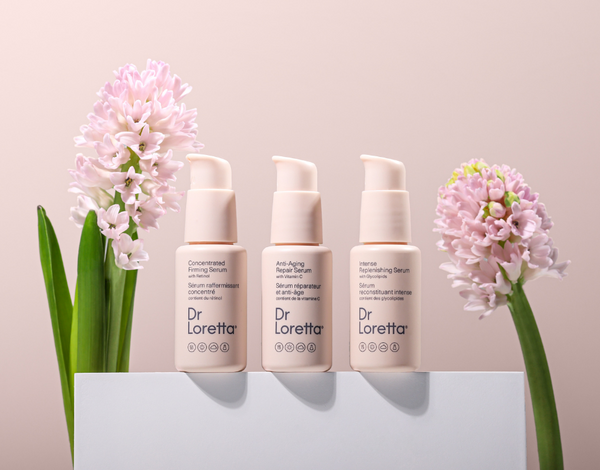As a practicing, board-certified dermatologist of 40+ years, Dr. Loretta Ciraldo has performed tens of thousands of total body exams and continues to see such a remarkable increase of damage in skin exposed to the world (like your face and neck) compared to the skin protected by clothing (like your stomach and lower back).
As no other skincare line on the market was designed to address this discovery holistically, she realized that she had to create one herself!
Exposed vs Unexposed Skin*
Exposed skin shows more signs of premature aging, like discoloration, sagging, texture, and wrinkles. Unexposed skin typically looks younger and healthier as seen below.


*Photos taken on the same patient, on the same day, with the same camera.
At the time, conventional dermatology attributed these kinds of differences to UV-related sun damage, but Dr. Loretta suspected there was more to the story — and she was right.
What’s actually aging our skin?
Dr. Loretta has dedicated her career to understanding why our skin ages and how we can incorporate effective products into a simplified skincare routine. Her approach to skincare formulation is rooted in the Skin Exposome Theory of Aging. This explains that at least 80% of unwanted skin changes are from exposure to the real world environmental aggressors & other influences, including stress, nutrition and sleep patterns.
Dr. Loretta formulated every product with high concentrations of proven actives and effective botanical ingredients to address the four key real-world factors we face each day.
The Four Real World Factors

Shop Dr. Loretta's skincare products designed for the real world that do more with less.
Studies Mentioned In This Blog
Krutmann, Jean, et al. “The Skin Aging Exposome.” Journal of Dermatological Science, vol. 85, no. 3, 2017, pp. 152–161., https://doi.org/10.1016/j.jdermsci.2016.09.015.
Krutmann, Jean, et al. "<a href="https://doi.org/10.1016/j.jdermsci.2016.09.015"" target="_blank">The Skin Aging Exposome.</a>” Journal of Dermatological Science, vol. 85, no. 3, 2017, pp. 152–161.


